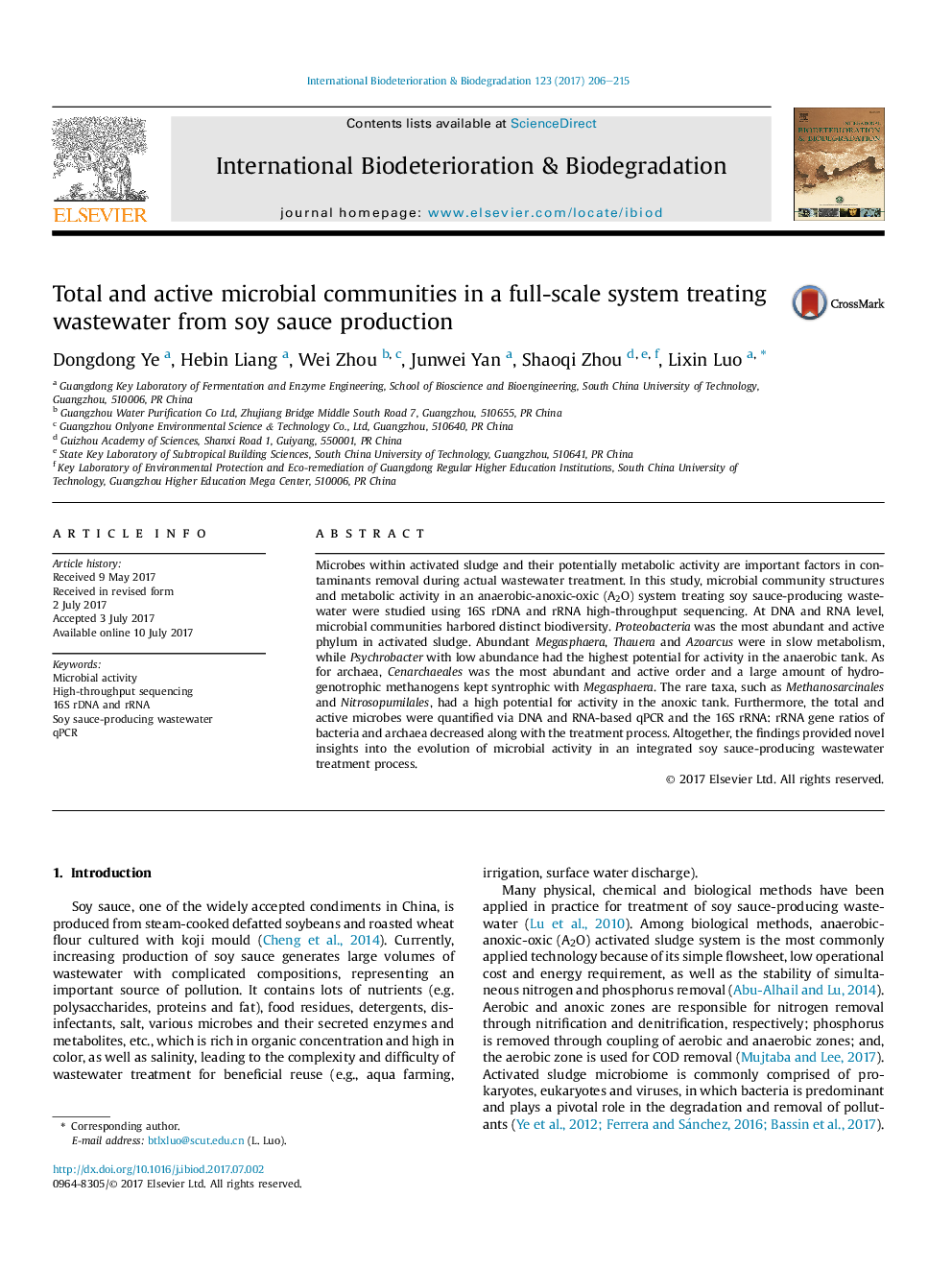| کد مقاله | کد نشریه | سال انتشار | مقاله انگلیسی | نسخه تمام متن |
|---|---|---|---|---|
| 5740269 | 1616294 | 2017 | 10 صفحه PDF | دانلود رایگان |
- Total and active microbes were investigated in activated sludge.
- Proteobacteria was the most abundant and active phylum.
- Psychrobacter had the highest potential for activity in the anaerobic tank.
- 16S rRNA: rRNA gene ratios of bacteria and archaea decreased with treatment.
Microbes within activated sludge and their potentially metabolic activity are important factors in contaminants removal during actual wastewater treatment. In this study, microbial community structures and metabolic activity in an anaerobic-anoxic-oxic (A2O) system treating soy sauce-producing wastewater were studied using 16S rDNA and rRNA high-throughput sequencing. At DNA and RNA level, microbial communities harbored distinct biodiversity. Proteobacteria was the most abundant and active phylum in activated sludge. Abundant Megasphaera, Thauera and Azoarcus were in slow metabolism, while Psychrobacter with low abundance had the highest potential for activity in the anaerobic tank. As for archaea, Cenarchaeales was the most abundant and active order and a large amount of hydrogenotrophic methanogens kept syntrophic with Megasphaera. The rare taxa, such as Methanosarcinales and Nitrosopumilales, had a high potential for activity in the anoxic tank. Furthermore, the total and active microbes were quantified via DNA and RNA-based qPCR and the 16S rRNA: rRNA gene ratios of bacteria and archaea decreased along with the treatment process. Altogether, the findings provided novel insights into the evolution of microbial activity in an integrated soy sauce-producing wastewater treatment process.
Journal: International Biodeterioration & Biodegradation - Volume 123, September 2017, Pages 206-215
